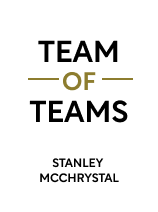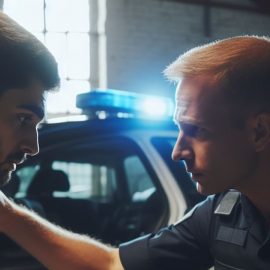

This article is an excerpt from the Shortform book guide to "Team of Teams" by Stanley McChrystal. Shortform has the world's best summaries and analyses of books you should be reading.
Like this article? Sign up for a free trial here .
How do you establish team trust in a complex organization? What can you do to get team members of specialized, self-contained units to function cooperatively?
In Team of Teams, Stanley McChrystal shares his advice on how to develop team trust in an organization composed of multiple teams, drawing from his experience as a general officer in the U.S. Task Force. To this end, he established several programs aimed at fostering cooperation between task force units that didn’t normally overlap.
Keep reading for McChrystal’s advice on how to build team trust in a complex organization.
Stanley McChrystal on Team Trust
When Stanley McChrystal assumed leadership of the JSOC, he channeled his efforts into creating a teamwork ecosystem that would operate on team trust and cooperation (as opposed to silos-based communication).
To establish team trust between units accustomed to operating in silos, McChrystal established an embedding program, which assigned a team member to a different team for six months. The idea was to:
- Provide embedded team members with a view of the war from within a different team
- Build new personal relationships
- Consequently, create ties between teams
Special operations teams at first resisted the program—however, as a point of pride, each sent their best team member to represent them. The experience built understanding and trust as the embedded team members saw the other teams’ strengths and shared their new-found knowledge with their “home” team.
In a similar program to build ties with the external agencies (the CIA, NSA, and so on), the task force greatly expanded an existing program of sending liaison officers to these partner agencies. As the special ops teams had sent their best operatives to be embeds, the task force chose only top quality leaders as liaisons.
In addition to building team trust through the liaison program, the connections and knowledge sharing enabled the task force to develop a more well-rounded understanding of AQI from partner agencies—for instance, about how the terrorist group’s global finance system worked.
Also, partner agencies began sending more people to the task force meetings—and the seats at the Situational Awareness Room table filled up. Agencies and teams found that the more they cooperated, the more they benefited.
A Liaison Success Story
The task force sent a Navy SEAL officer to a U.S. embassy in the Middle East to coordinate efforts against Al Qaeda—however, the embassy staff at first didn’t welcome him or share intelligence with him. Having little work to do, he volunteered to collect the trash from each office—and used the job to meet people and build relationships. For instance, from taking out the trash, he learned that one embassy employee liked a certain fast-food sandwich, so he requested the task force send these sandwiches with its next delivery.
The SEAL officer slowly won respect and eventually the ambassador approached him to request help with protecting the embassy and its forces against Al Qaeda, which was ramping up in that country. The officer provided expert advice and task force intelligence, as well as pulling in task force resources.
Cooperation Becomes Automatic
McChrystal knew that he was being successful in his efforts to establish team trust within different task force functions when special operations teams began competing for less for limited ISR (intelligence, surveillance, reconnaissance) assets such as drones or aircraft for their missions. Since these resources were scarce, some missions had to be postponed when air support was diverted elsewhere.
Through information sharing, especially in the O&I, team members could see the overall operation beyond their team missions and support the use of resources where the fighting was most intense and air support was most needed. Further, because of the relationships built between teams, they trusted the decisions being made and also trusted that when they had a priority mission, it would get air support.
Researchers studying cooperation have identified two ways of making a decision to cooperate:
- Reflection: “If I help them now, they’ll help me later.”
- Second nature: The decision to cooperate is automatic.
In the task force, decisions to cooperate were reflective at first, but after positive experiences with the benefits of cooperation, decisions became automatic—cooperation became the norm.

———End of Preview———
Like what you just read? Read the rest of the world's best book summary and analysis of Stanley McChrystal's "Team of Teams" at Shortform .
Here's what you'll find in our full Team of Teams summary :
- How General Stanley McChrystal transformed the U.S. Joint Special Operations Task Force
- What teams that operate well can offer to an organization
- How the team of teams organizational model helped bring down a major Al Qaeda leader






